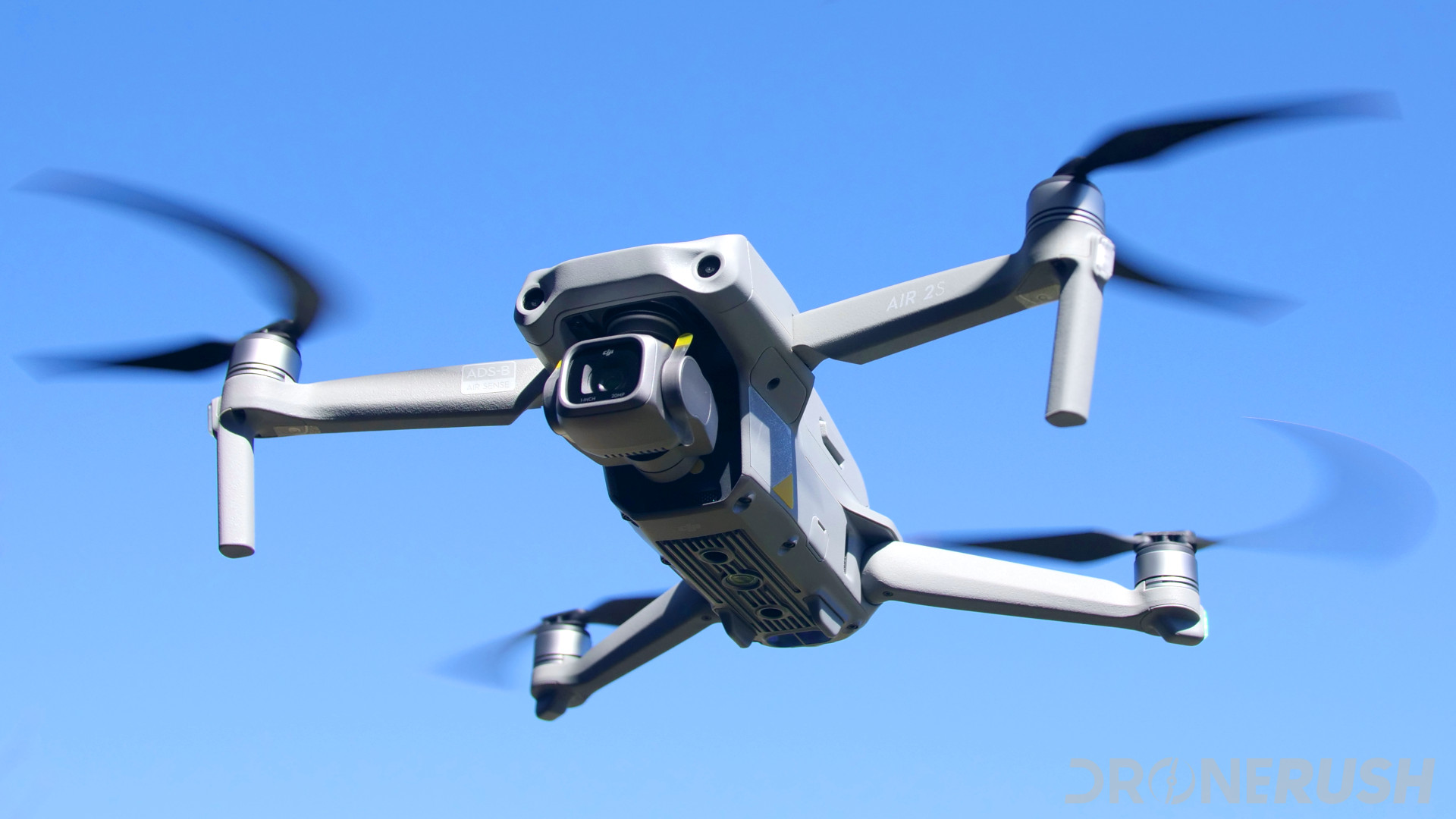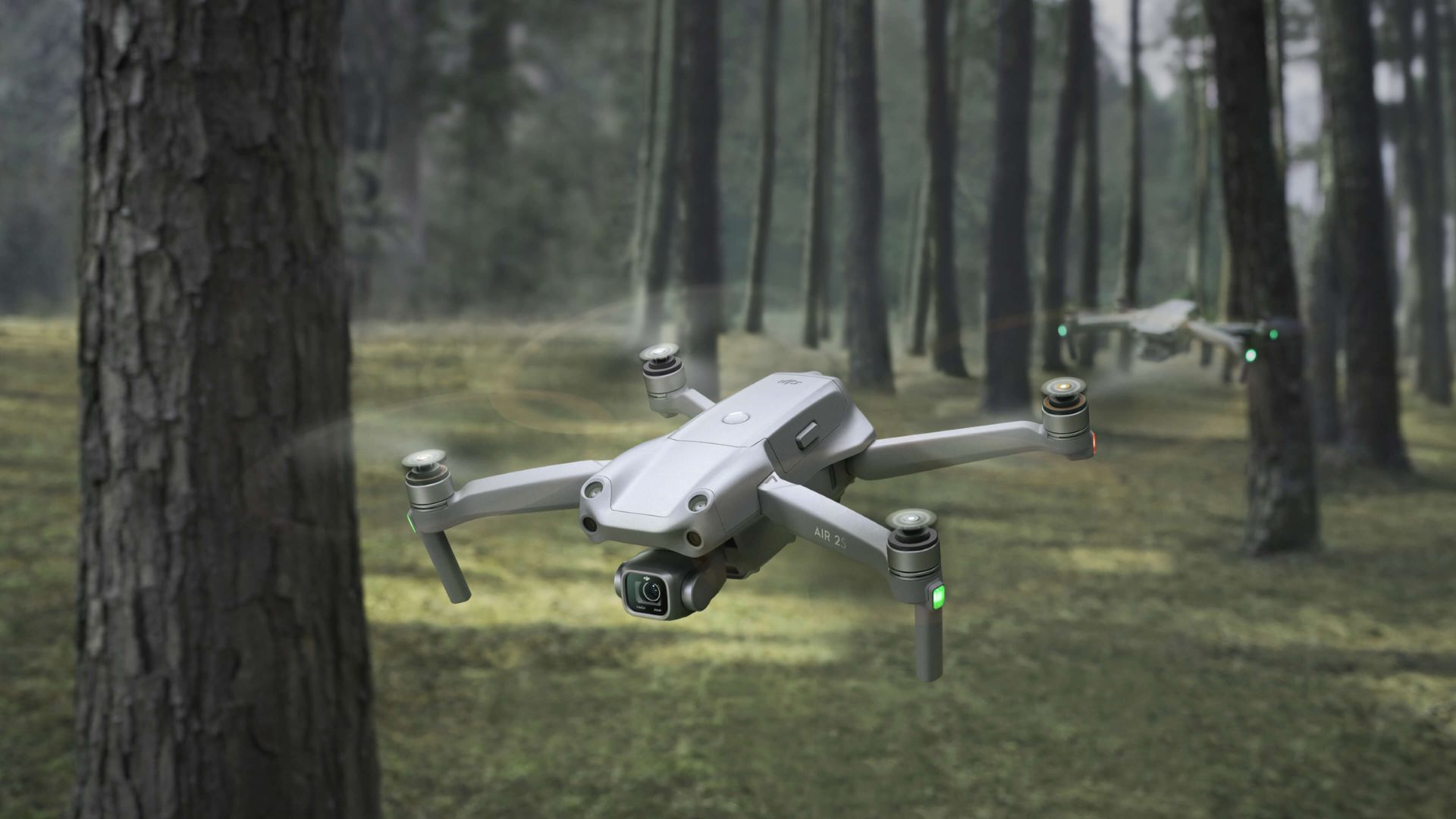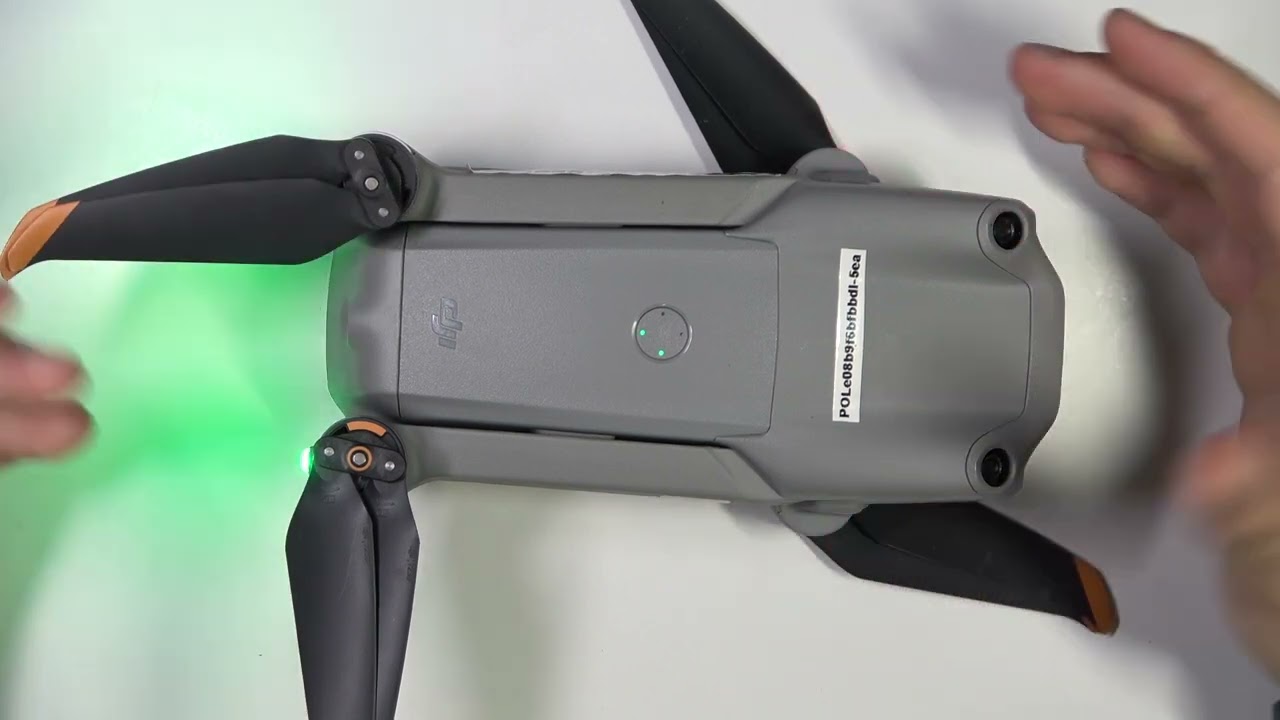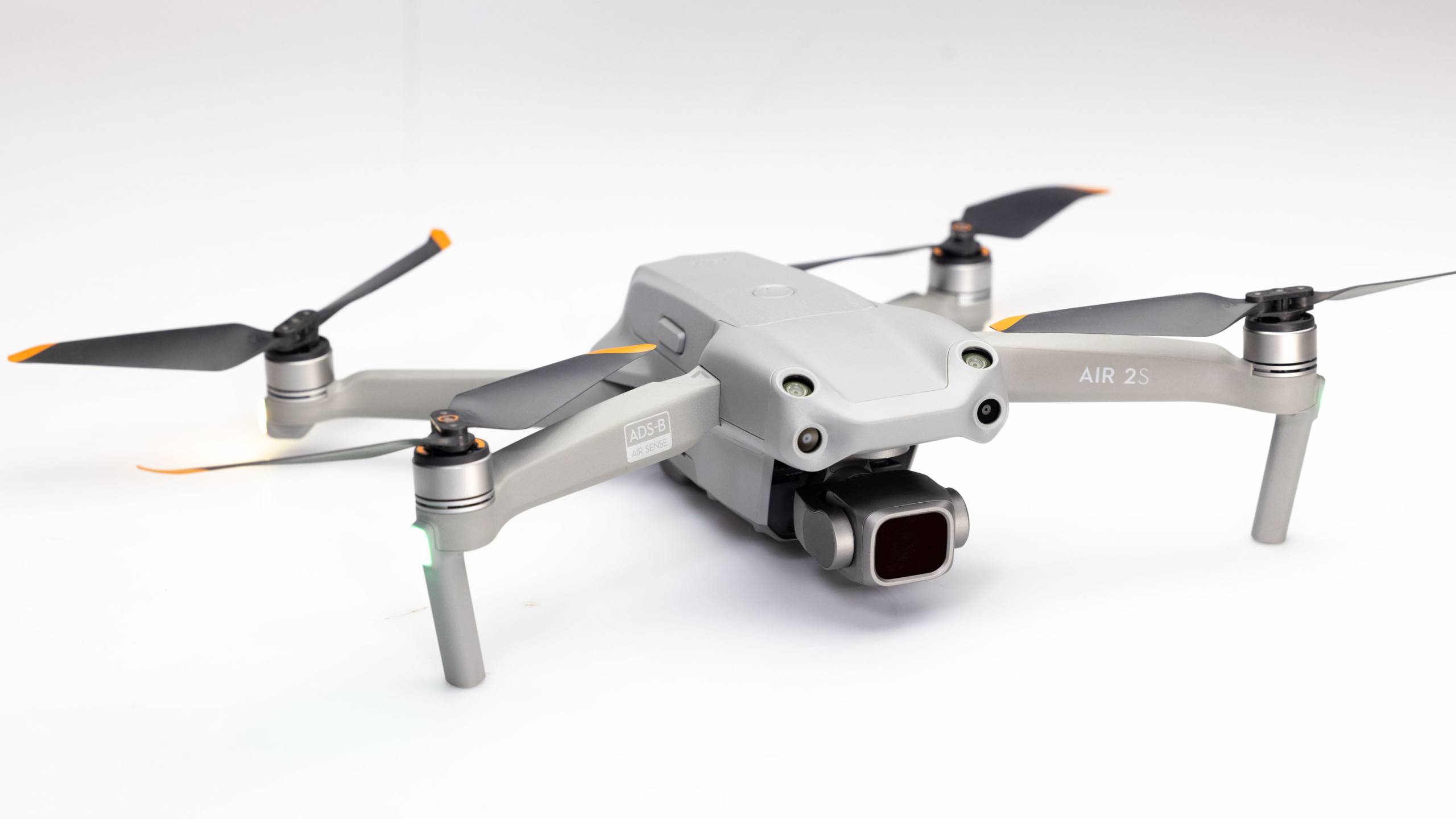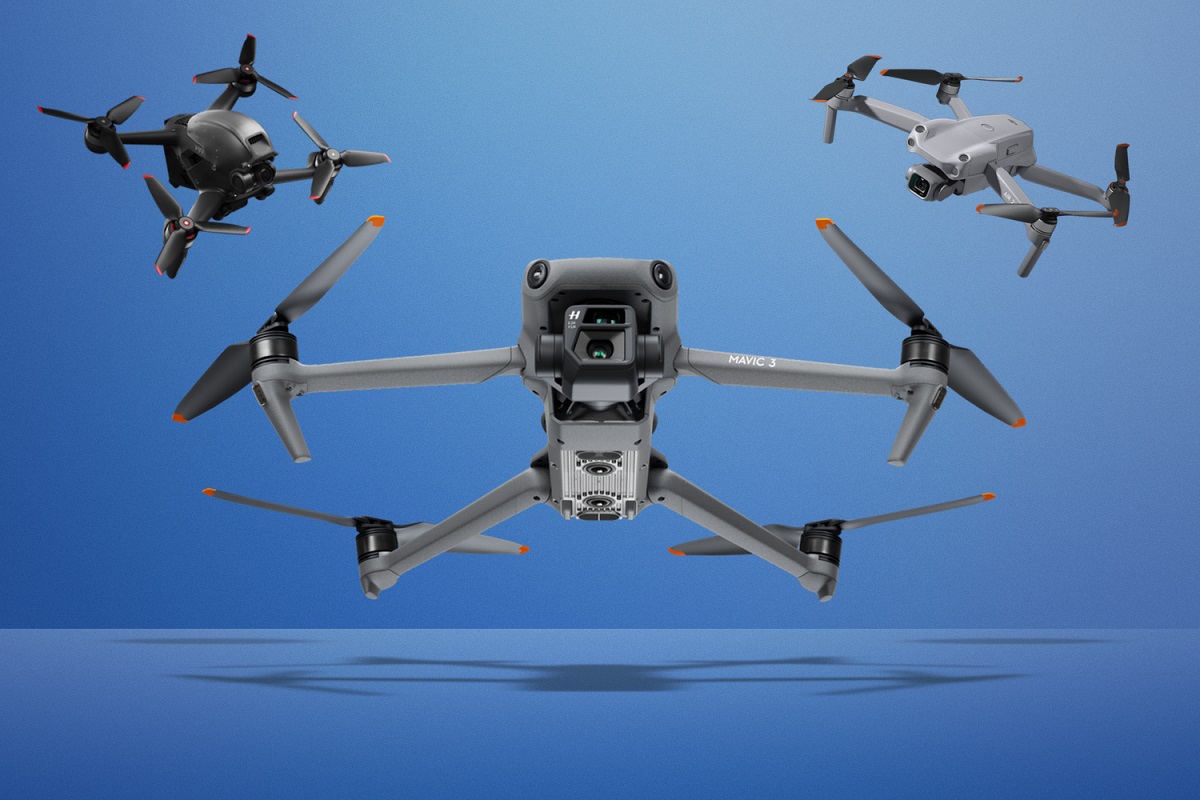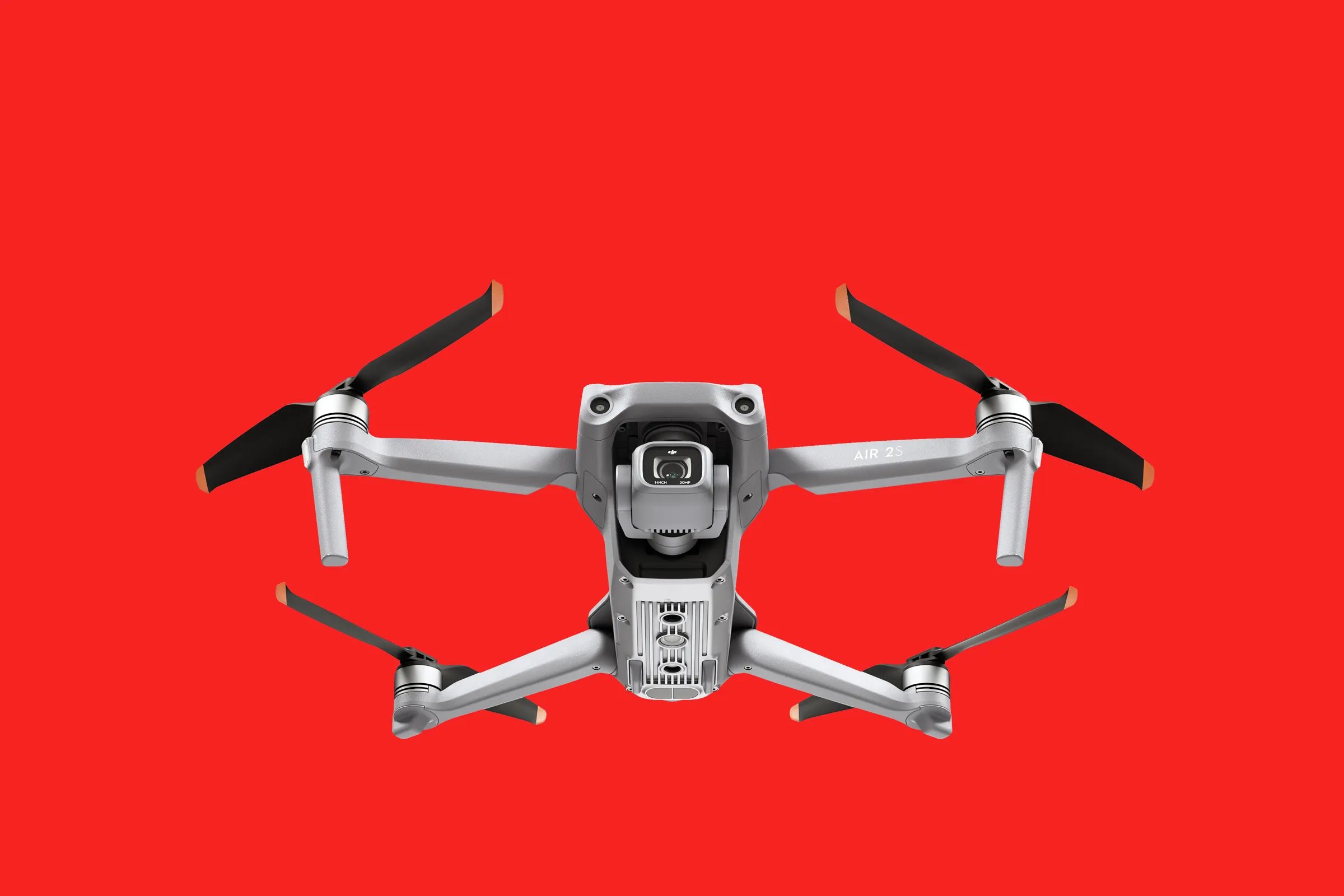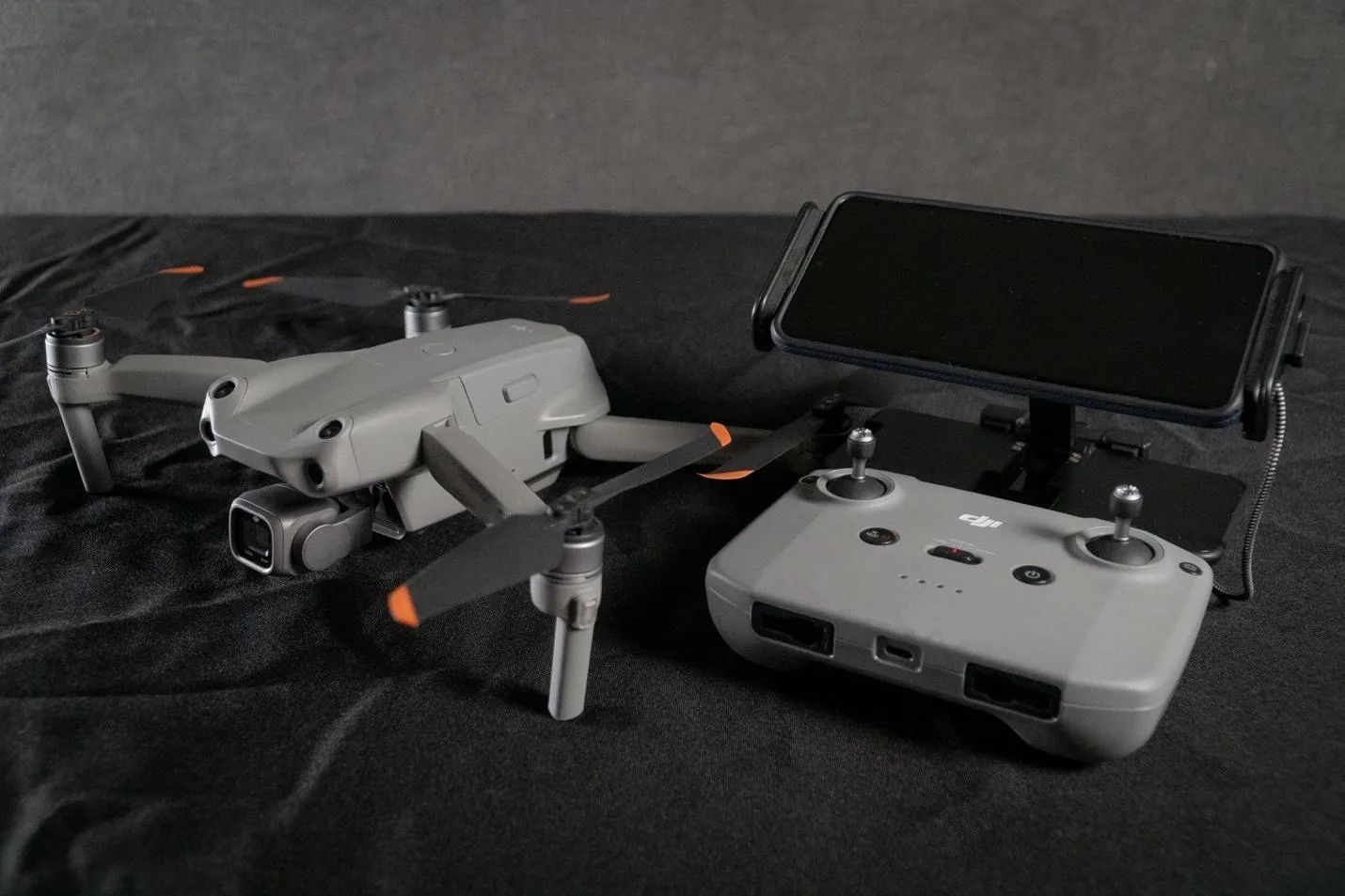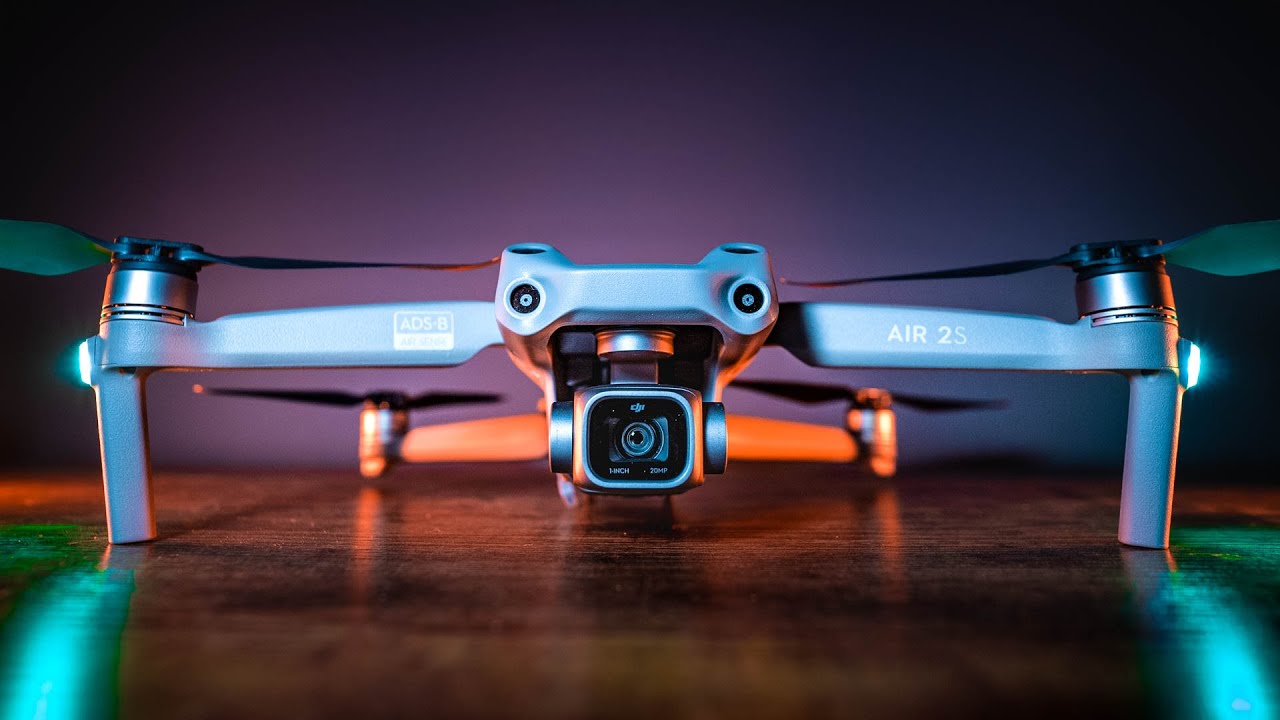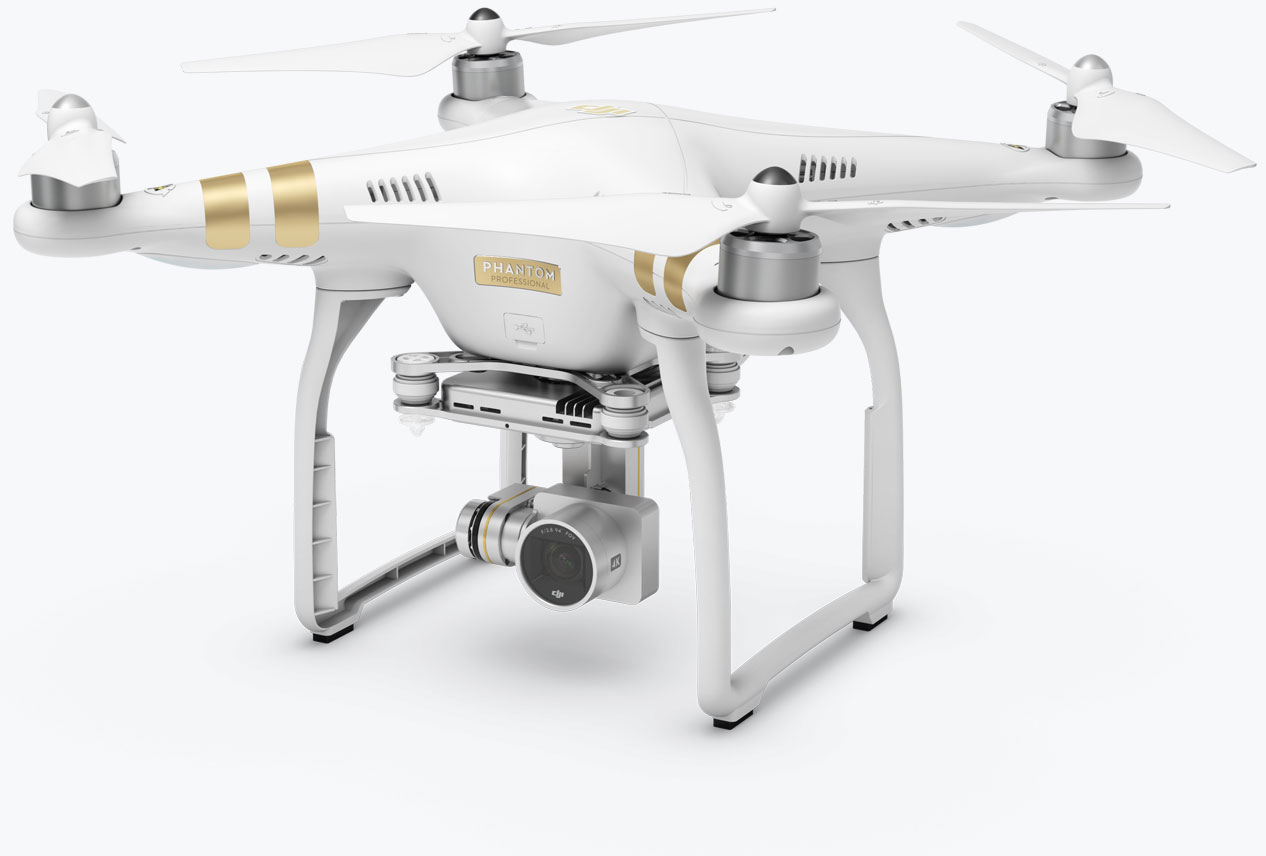Introduction
Welcome to our in-depth exploration of the flight capabilities of the DJI Air 2S drone. As technology continues to advance, drones have become more than just a hobbyist’s toy or a filmmaker’s tool. They have evolved into powerful aerial machines capable of capturing stunning footage and delivering exhilarating flight experiences.
The DJI Air 2S is a prime example of this evolution, boasting impressive specs and a wide array of features that enhance its flight performance. Whether you’re a professional filmmaker looking to capture breathtaking aerial shots or an enthusiast seeking the thrill of high-speed flight, the DJI Air 2S has something to offer.
In this article, we will dive into the details of the DJI Air 2S’s top speed, flight modes, obstacle avoidance capabilities, and factors that can affect its performance. We will also provide valuable tips on how to maximize the speed and take full advantage of this exceptional drone.
Whether you’re a seasoned pilot or just getting started, this article will serve as your comprehensive guide to understanding the DJI Air 2S’s flight capabilities and how to harness its full potential.
The Top Speed of DJI Air 2S
When it comes to drone performance, one of the first factors that enthusiasts and professionals alike look into is the top speed of the aircraft. The DJI Air 2S does not disappoint in this regard, offering an impressive top speed of up to 42.5 mph (68.4 km/h). This makes it one of the fastest drones in its class, allowing for swift and dynamic flights that capture the essence of speed and excitement.
The high-speed capabilities of the DJI Air 2S open up a world of possibilities for capturing fast-paced action shots, whether you’re filming extreme sports, chasing cars, or exploring vast landscapes from a bird’s-eye view. The ability to reach such speeds ensures that you can keep up with the subject and capture the moment with unparalleled precision.
It’s important to note that the top speed of the DJI Air 2S may vary depending on various factors, including environmental conditions, payload weight, and flight mode. Additionally, the maximum speed is achievable when the aircraft is in Sport mode, which we will discuss in more detail later in this article.
With such impressive speed capabilities, the DJI Air 2S allows you to push the boundaries of aerial cinematography and capture stunning footage that will leave viewers breathless. Whether you’re looking to create dynamic action sequences or simply enjoy the thrill of high-speed flight, the DJI Air 2S can deliver an unparalleled experience.
Now that we’ve explored the top speed of the DJI Air 2S, let’s delve into the various flight modes and how they can enhance your flying experience.
Understanding the Flight Modes
The DJI Air 2S offers a range of flight modes that cater to different flying preferences and shooting styles. Understanding these flight modes can help you optimize your flight experience and capture stunning aerial footage with ease.
1. Sport Mode: Sport mode unleashes the full speed potential of the DJI Air 2S, allowing for thrilling and speedy flights. In Sport mode, the drone can reach its maximum speed of up to 42.5 mph (68.4 km/h). This mode is ideal for capturing fast-moving subjects or when you need to cover a large area quickly.
2. Normal Mode: Normal mode is the default mode for the DJI Air 2S and is perfect for aerial filmmaking. It offers a balanced flight performance that prioritizes stability and smoothness, allowing you to capture cinematic footage with ease. The speed in Normal mode is slightly lower than in Sport mode, but it still provides ample maneuverability for most shooting scenarios.
3. Tripod Mode: Tripod mode is designed for precise and slow movements. In this mode, the drone’s speed is significantly reduced, allowing for smooth and controlled flights. It is particularly useful when shooting in tight spaces or when precise and delicate movements are required. Tripod mode is also great for achieving cinematic, slow-motion shots that add a dramatic effect to your footage.
Each flight mode offers unique advantages and is suited for different shooting situations. By understanding the characteristics of each mode, you can select the most appropriate one to achieve your desired results. Whether you’re in need of high-speed action shots, smooth cinematic movements, or precision control, the DJI Air 2S has a flight mode that caters to your needs.
Next, let’s explore how the DJI Air 2S’s obstacle avoidance capabilities come into play and the safe flying speeds recommended by DJI.
Sport Mode: Unleashing the Speed
If you’re seeking an exhilarating flying experience and want to push the limits of the DJI Air 2S’s speed, then Sport mode is the flight mode for you. This mode allows you to unleash the full power and speed capabilities of the drone, enabling it to reach its maximum velocity of 42.5 mph (68.4 km/h).
Sport mode is designed for those who crave adrenaline and want to capture fast-moving subjects or cover large areas quickly. It is the go-to mode for action-packed aerial cinematography, sports photography, or when you simply want to experience the thrill of high-speed flight.
In Sport mode, the DJI Air 2S becomes highly responsive to your commands, allowing for quick acceleration and sharp turns. The drone’s agility in this mode enables you to capture dynamic shots with precision and fluidity.
It’s important to note that flying in Sport mode requires caution and expertise. The increased speed and responsiveness of the drone require skilled piloting to ensure safe flight and avoid potential collisions. Always be mindful of your surroundings, maintain visual line of sight with the drone, and follow local regulations and guidelines.
Additionally, flying in Sport mode may also have an impact on the drone’s battery life. The increased speed and maneuverability result in higher power consumption, reducing the overall flight time. It’s recommended to have spare batteries on hand to prolong your flying sessions and make the most of the thrilling Sport mode.
Now that we’ve explored Sport mode and its high-speed capabilities, let’s take a closer look at Normal mode, which provides a balanced flight performance for aerial filmmaking.
Normal Mode: Perfect for Aerial Filmmaking
When it comes to capturing cinematic footage with the DJI Air 2S, Normal mode is the ideal flight mode to choose. This mode provides a balanced flight performance that prioritizes stability, smoothness, and precise control, making it perfect for aerial filmmaking.
In Normal mode, the DJI Air 2S offers a slightly lower speed compared to Sport mode, but it still provides ample maneuverability for most shooting scenarios. This allows you to smoothly navigate through the air, ensuring that your footage remains steady and professional-looking.
One of the key advantages of Normal mode is its stability. The drone’s flight movements are refined, minimizing any sudden jerks or jitters, which is crucial for achieving smooth and cinematic shots. Whether you’re performing sweeping aerial pans, tracking shots, or delicate camera movements, Normal mode ensures that your footage maintains a high level of stability and professionalism.
Furthermore, Normal mode is designed to strike a balance between responsiveness and controlled movements. This makes it easier to capture precise shots, even in challenging shooting environments. Whether you’re flying close to obstacles or in confined spaces, Normal mode gives you the confidence to fly with precision and capture breathtaking footage.
Another advantage of Normal mode is its optimized flight characteristics for capturing photos and videos. It ensures that the drone’s camera remains steady, minimizing vibrations and allowing you to capture high-quality, sharp images and silky-smooth videos.
Overall, Normal mode is the go-to flight mode for aerial filmmakers who prioritize stability, control, and smoothness in their footage. Whether you’re shooting professional projects, showcasing your creativity, or capturing memories from a unique perspective, Normal mode on the DJI Air 2S is the perfect choice.
We have explored the high-speed capabilities of Sport mode and the balanced flight performance of Normal mode. Next, let’s discover Tripod mode, which provides precise and slow movements for capturing intricate scenes.
Tripod Mode: Precise and Slow Movements
When it comes to capturing precise and intricate shots, Tripod mode on the DJI Air 2S is the perfect flight mode to utilize. This mode is designed to offer ultra-stable flight movements, allowing for slow and controlled flying with an emphasis on precision.
In Tripod mode, the DJI Air 2S significantly reduces its speed, offering a slow and deliberate flight performance. This slower speed enables you to navigate through tight spaces or capture shots that require delicate and precise movements. Whether you’re filming in a crowded area, flying indoors, or need to make fine adjustments to your shot, Tripod mode gives you the confidence and control to achieve the desired result.
The reduced speed in Tripod mode is beneficial in multiple ways. Firstly, it ensures that the drone moves smoothly and precisely, minimizing any sudden or jerky movements that could potentially ruin a shot. This level of control and stability is especially important when capturing shots that require slow pans, tracking subjects, or performing intricate camera movements.
Secondly, the slow speed allows you to capture stunning slow-motion shots. By combining the slow flight speed of the drone with appropriate camera settings, you can achieve a beautiful cinematic effect that emphasizes details and adds a dramatic impact to your footage.
Furthermore, Tripod mode enhances the DJI Air 2S’s obstacle avoidance capabilities. The reduced speed allows the drone’s sensors to better detect and avoid obstacles, providing an additional layer of safety and confidence when flying in complex environments.
Overall, Tripod mode is an essential flight mode for capturing precise, slow, and controlled movements. Whether you’re filming in tight spaces, creating intricate tracking shots, or aiming to achieve stunning slow-motion footage, Tripod mode on the DJI Air 2S offers the precision and stability you need.
Now that we’ve explored the flight modes of the DJI Air 2S, let’s dig deeper into the obstacle avoidance capabilities and the safe flying speeds recommended by DJI.
Obstacle Avoidance and Safe Flying Speeds
The DJI Air 2S is equipped with advanced obstacle avoidance sensors and technologies that enhance flight safety and help prevent collisions. These features work in conjunction with the drone’s intelligent flight modes and flight speed to ensure a safe and smooth flying experience.
The obstacle avoidance system on the DJI Air 2S utilizes a combination of forward, backward, and downward-facing sensors to detect obstacles in its flight path. When obstacles are detected, the drone can automatically adjust its flight trajectory to avoid a collision or come to a stop if necessary.
Engaging obstacle avoidance is especially crucial when flying at higher speeds or in challenging environments. The sensors enable the DJI Air 2S to detect and avoid obstacles such as trees, buildings, or other objects, reducing the risk of potential accidents or damage to the drone.
It’s important to note that while obstacle avoidance is a valuable safety feature, it’s always recommended to maintain visual line of sight with the drone and fly in open areas whenever possible. Additionally, understanding the limitations of the obstacle avoidance system is crucial to ensure safe flying. Certain conditions, such as extremely low light or reflective surfaces, may affect the drone’s ability to detect obstacles accurately. Therefore, it’s essential to remain vigilant during flight and be aware of your surroundings.
In terms of safe flying speeds, DJI recommends flying at a speed that allows for optimal control and maneuverability while maintaining cautious awareness of your environment. The DJI Air 2S offers different flight modes with varying speeds, and it’s important to choose the appropriate speed for your specific shooting or flying requirements.
When flying in crowded areas or near obstacles, it’s recommended to use a lower speed setting to allow for better control and reaction time. This allows you to make precise adjustments and avoid potential collisions.
On the other hand, when you have sufficient open space and are capturing shots that require higher speeds, such as tracking fast-moving subjects or covering large areas quickly, selecting Sport mode can deliver the necessary velocity and excitement. Just be sure to fly within your skill level and adhere to local regulations and guidelines.
By understanding the obstacle avoidance capabilities and flying at safe speeds, you can enjoy a worry-free flight experience and focus on capturing stunning aerial footage.
Now that we’ve explored obstacle avoidance and safe flying speeds, let’s discuss some key factors that can affect the flight speed of the DJI Air 2S.
Factors Affecting the Flight Speed
Several factors can influence the flight speed of the DJI Air 2S. Understanding these factors is essential for maximizing the drone’s performance and achieving the desired flight experience.
1. Battery Level: The remaining battery charge impacts the flight speed of the DJI Air 2S. As the battery depletes, the drone’s flight performance may be affected, including a potential reduction in maximum speed. It’s important to regularly monitor the battery level and land the drone safely before it reaches critical levels to avoid any potential loss of control.
2. Environmental Conditions: The environmental conditions, such as wind speed and weather, can affect the flight speed and stability of the DJI Air 2S. Strong winds can impede the drone’s forward movement or cause it to drift. It’s recommended to fly in calm weather conditions to ensure optimal flight performance and minimize any potential risks.
3. Payload Weight: The weight of any additional payload, such as a camera accessory or extra batteries, can impact the flight speed of the DJI Air 2S. Heavier payloads may reduce the drone’s agility and overall speed. It’s advisable to consider the weight of any accessories or added equipment when calculating the drone’s flight capabilities.
4. Flight Mode: The flight mode selected on the DJI Air 2S can also affect its speed. As mentioned earlier, Sport mode offers the highest speed, Normal mode provides a balanced performance, and Tripod mode offers slow and precise movements. Choosing the appropriate flight mode for your specific shooting or flying requirements is crucial in achieving the desired flight speed.
5. Firmware Updates: Firmware updates released by DJI can also impact the flight speed and performance of the DJI Air 2S. These updates may include optimizations and enhancements to the drone’s flight capabilities. It’s recommended to keep the firmware up to date to ensure the best possible flight experience.
By considering these factors and adjusting accordingly, you can maximize the flight speed and performance of the DJI Air 2S, ensuring a smooth and controlled flying experience that meets your specific requirements.
Now that we’ve explored the factors that can affect the flight speed, let’s move on to some valuable tips for maximizing the speed of the DJI Air 2S.
Tips for Maximizing the Speed of DJI Air 2S
If you’re looking to maximize the speed and performance of the DJI Air 2S, here are some valuable tips to keep in mind:
1. Fly in Sport Mode: To experience the full speed potential of the DJI Air 2S, switch to Sport mode. This mode unlocks the highest speed capabilities of the drone and allows for exciting and dynamic flights. Just remember to fly responsibly and follow local regulations when operating in Sport mode.
2. Optimize Battery Life: Ensure that the drone’s batteries are fully charged before flying to maximize the flight time. Flying with a fresh battery will provide optimal power and performance, enabling the drone to reach and maintain higher speeds for longer durations.
3. Fly in Open Areas: When aiming for high-speed flights, it’s best to choose open areas with minimal obstacles and distractions. This ensures a clear flight path and reduces the risk of collisions. Open fields, parks, or designated drone flying areas are ideal for unleashing the speed of the DJI Air 2S.
4. Optimal Weather Conditions: Fly the DJI Air 2S in calm weather conditions to minimize wind interference and enhance flight performance. Strong winds can impact the drone’s speed and stability, so it’s best to avoid flying during gusty conditions.
5. Practice and Familiarize: Spend time practicing and becoming familiar with the flight characteristics of the DJI Air 2S. This will allow you to develop proficiency in controlling the drone at higher speeds and navigating through different flight maneuvers confidently.
6. Reduce Payload Weight: Minimize unnecessary payload weight, such as excess camera equipment, to improve the drone’s speed and maneuverability. Reduced payload weight allows for faster acceleration and more responsive flight movements.
7. Stay Up-to-Date: Keep the DJI Air 2S’s firmware updated to benefit from any performance enhancements and optimizations released by DJI. these updates can improve the drone’s flight capabilities, including speed and overall performance.
Remember, safety should always be a top priority when flying at high speeds. Maintain visual line of sight, adhere to local regulations, and be aware of your surroundings to ensure a safe and enjoyable flying experience.
By following these tips, you can maximize the speed and performance of the DJI Air 2S, allowing you to capture exhilarating shots and create stunning aerial footage that pushes the boundaries of your creativity.
Now that we’ve explored the tips for maximizing speed, let’s conclude this guide to the flight capabilities of the DJI Air 2S.
Conclusion
In conclusion, the DJI Air 2S is a remarkable drone that offers impressive speed and flight capabilities. With a top speed of up to 42.5 mph (68.4 km/h), this drone allows you to capture fast-paced action shots and cover large areas quickly. Whether you’re a professional filmmaker, an aerial photography enthusiast, or simply someone looking for an exciting flying experience, the DJI Air 2S has something to offer.
We explored the different flight modes of the DJI Air 2S, including Sport mode, Normal mode, and Tripod mode. Sport mode unleashes the speed and agility of the drone, while Normal mode offers a balanced flight performance ideal for aerial filmmaking. Tripod mode provides slow and precise movements, perfect for capturing intricate scenes. Understanding these flight modes allows you to optimize your flying experience and capture stunning footage.
We also discussed obstacle avoidance and the importance of safe flying speeds. The DJI Air 2S’s obstacle avoidance system, combined with responsible flying at safe speeds, ensures a smooth and safe flight experience. It’s important to consider factors such as battery level, environmental conditions, and payload weight when determining the appropriate flying speed for your specific shooting requirements.
To maximize the speed of the DJI Air 2S, we provided valuable tips such as flying in Sport mode, optimizing battery life, choosing open areas for high-speed flights, practicing and familiarizing yourself with the drone’s flight characteristics, and reducing unnecessary payload weight. Implementing these tips will help you unlock the full potential of the DJI Air 2S and capture breathtaking aerial footage.
As always, safety should be a top priority. Adhere to local regulations, maintain visual line of sight, and be aware of your surroundings when flying the DJI Air 2S at high speeds.
In summary, the DJI Air 2S is an exceptional drone that combines speed, performance, and versatility. Whether you’re a professional filmmaker, an aspiring aerial photographer, or an adrenaline-seeking enthusiast, this drone is a remarkable tool that allows you to push the boundaries of creativity and capture stunning aerial footage.







